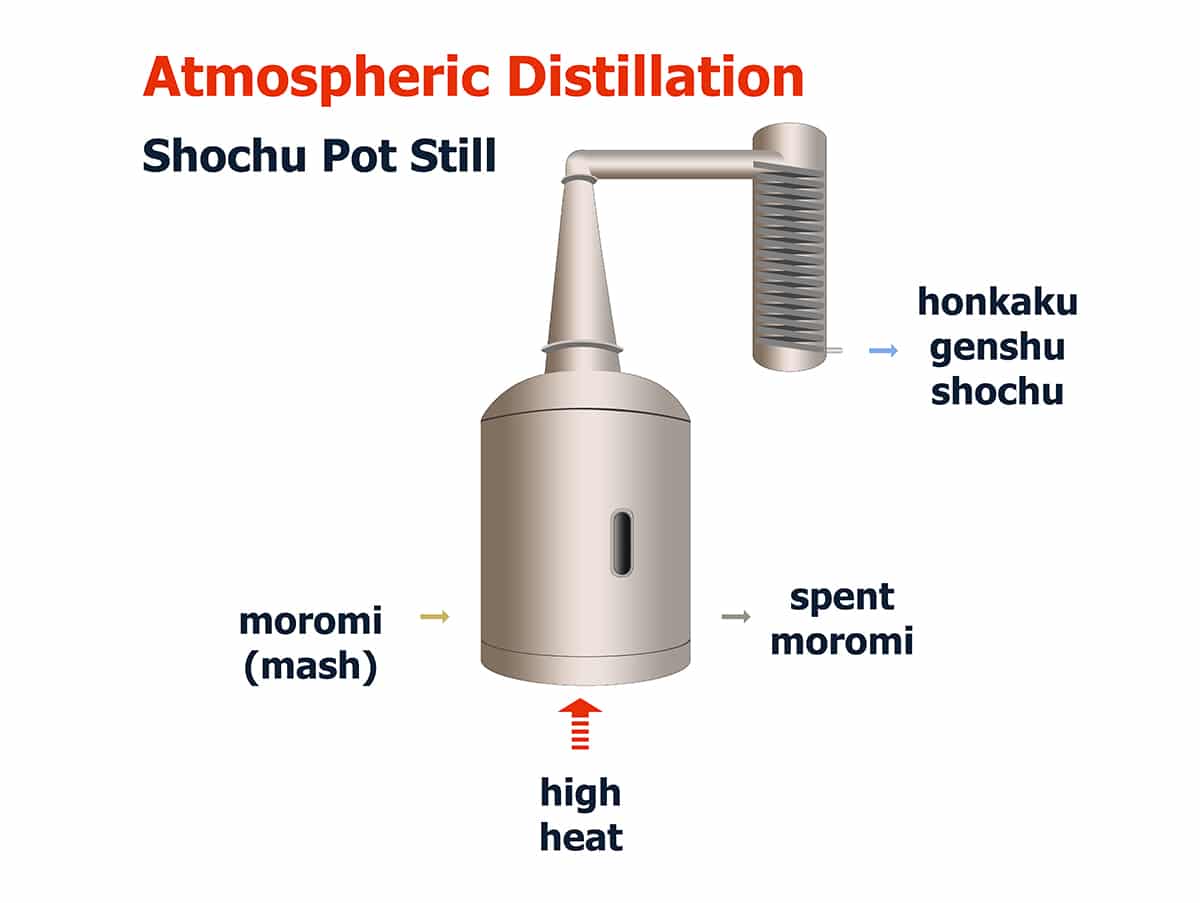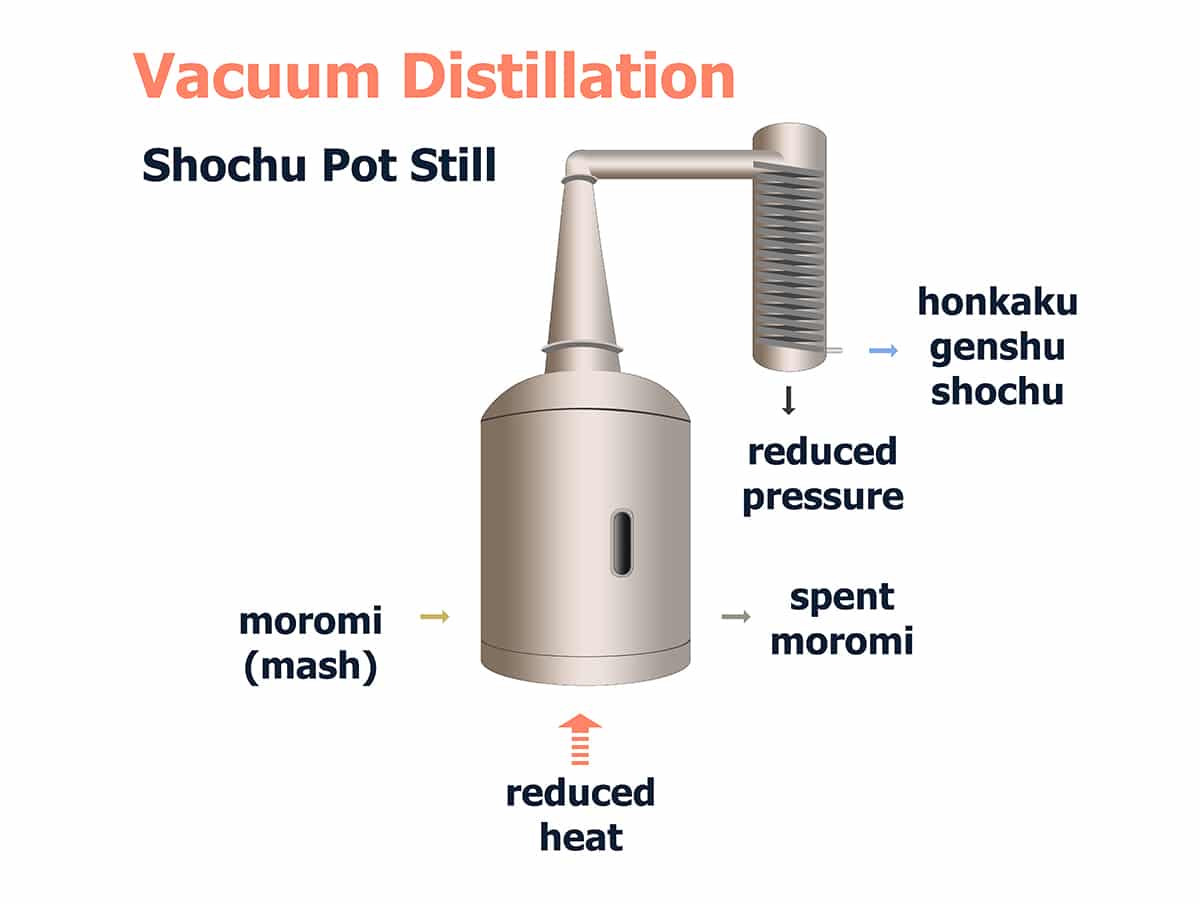The distillation process plays a critical role in shaping the unique flavors and aromas of shochu. There are two primary distillation methods: atmospheric and vacuum distillation.
This page covers the differences between the two styles of shochu production and their results.

Joatsu: Atmospheric Distillation of Shochu
Atmospheric distillation (joatsu, 常圧蒸留) is the original method of distilling shochu. It involves boiling moromi (the fermented mash) in a pot still at normal pressure. Heating the moromi to approximately 185-200 °F causes boiling and produces alcoholic vapor. These higher temperatures encourage ingredient extraction and high-temperature chemical reactions.
Shochu distilled this way has a robust flavor with a powerful aroma that varies depending on the raw materials (rice, sweet potato, etc.).
Nearly all stills can distill spirits at ambient pressures. For shochu, stainless steel is the most common material of stills. Wooden barrels and cask stills were the standards prior to the use of stainless steel. And many are still used today.

Genatsu: Vacuum Distillation of Shochu
Vacuum distillation (genatsu, 減圧蒸留) is a more modern and sophisticated method of shochu production. It involves boiling the fermented mash at a lower temperature under vacuum pressure. Stills for vacuum distillation are often made of steel to handle the reduced pressure. This still can produce joatsu shochu, as well.
Lower temperatures (between 115-130 °F) result in a more gentle extraction, production of more fruity esters, and less heavy congeners. The result is a fruitier, more floral, smoother, more refined shochu.
Ingredients and Distillation Methods
Atmospheric distillation is typically associated with sweet potato shochu and awamori, which have rich and complex flavors. In contrast, vacuum distillation is common with rice shochu, which has a lighter and more delicate flavor profile. It’s more common to find vacuum-distilled barley and soba shochu, as well. But it depends on where they’re from.
And these are just generalizations. There are many vacuum-distilled imo shochu and atmospherically-distilled rice shochu on the market.